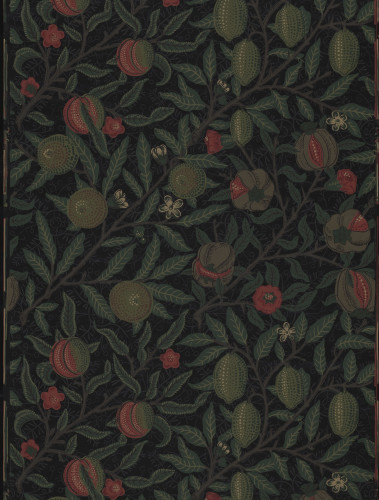William Morris designed Fruit (also referred to as Pomegranate) in 1862 and it is one of his earliest designs for wallpaper. The pattern is formed of pomegranates, oranges and limes surrounded by foliage and flowers. The original design is in the collection of the Victoria and Albert Museum, London (E.299-2009) and included olive branches which were removed in the finished wallpaper. Morris first tried printing wallpaper at his studio in Red Lion Square in oil colours from etched zinc blocks. Unsuccessful, he ordered traditional pearwood printing blocks to be cut for ‘Fruit’ and production was then subcontracted out to Jeffrey & Co. of Islington, which specialised in the production of hand-printed wallpapers and continued to print the firm’s wallpapers.
Morris & Co. originally produced the paper in cream and blue colourways, and this black colourway appeared later around 1917. This version was printed by the firm Arthur Sanderson & Sons Ltd., who acquired the original wallpaper printing blocks from Morris & Co. when they closed in 1940. The glazed black background was produced by Sanderson for the American marked (see. Wallpapers at Temple Newsam 1635 to the Present)

